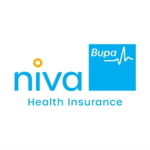Health insurance is a critical component of modern life, providing individuals and families with financial protection against the high costs of medical care. Within the terrain of health insurance, various terms and concepts can seem confusing, especially to those new to the field. One such concept is copayments, often called “copay.”
This article delves into the copay meaning, intricacies of copayments, exploring how they function within a best health insurance plan and their impact on healthcare access and costs.
Understanding Copayments
A copayment, or copay for short, is a fixed amount of money that a policyholder pays when receiving medical services or prescription drugs. This payment is usually a small fraction of the total cost of the service or medication, and its purpose is to share the financial burden between the insurance provider and the policyholder.
Copays are a fundamental feature of many health insurance plans and serve several important functions:
1. Affordability
Copays help policyholders afford medical services without bearing the full brunt of the cost upfront. For routine visits or prescription refills, this immediate financial relief can make healthcare more accessible.
2. Cost Sharing
By requiring policyholders to contribute a portion of the cost, copayments encourage responsible use of medical services. This helps prevent over utilisation and unnecessary medical visits, ultimately contributing to cost containment for the insurance provider and the healthcare system.
3. Predictability
Copay amounts are fixed and known in advance, making it easier for policyholders to budget for medical expenses. This predictability contrasts with scenarios where individuals might face unexpected, large medical bills.
4. Administrative Efficiency
Copays streamline billing processes, making it simpler for healthcare providers and insurance companies to manage payments. Unlike deductibles that need to be met before insurance coverage kicks in, copays are collected immediately, reducing administrative complexity.
Types of Copayments
Copay health insurance can vary based on the type of service or medication being received. Different copay amounts might apply to different categories of medical care:
1. Primary Care Visits
Copays for visits to primary care physicians are generally lower than those for specialists or emergency room visits. This encourages individuals to establish relationships with a primary care provider and seek initial medical guidance there.
2. Specialist Visits
When visiting specialists such as dermatologists, cardiologists, or orthopedists, copayments may be higher to reflect the specialised nature of the care.
3. Urgent Care and Emergency Room Visits
Due to these visits’ immediate and often unplanned nature, copayments for urgent care and emergency room services might be higher to deter unnecessary use of these facilities.
4. Prescription Medications
Copays for prescription drugs can vary depending on the type of medication, with generic drugs typically having lower copays than brand-name or specialty drugs.
5. Preventive Services
Many copay clause waive copayments for preventive services such as vaccinations, screenings, and wellness visits. This encourages individuals to prioritise preventative care, ultimately leading to healthier lives.
Tips for Navigating Copayment Plans
To make the most of a copay clause in health insurance, consider the following tips:
1. Understand Your Plan
Review your insurance policy documents to thoroughly understand your copayment structure and how it applies to different services.
2. Consider Generic Medications
Opt for generic medications with lower copayments to reduce your prescription costs.
3. Utilise Preventive Services
Take advantage of waived copayments for preventive services to maintain your health and catch potential issues early.
Conclusion
Copayments are crucial in making healthcare services and prescription drugs more accessible and affordable for policyholders. By sharing the cost burden between insurance providers and individuals, copayments encourage responsible use of medical services while offering predictability in out-of-pocket expenses. While copay plans have pros and cons, understanding their structure and considering personal accident insurance healthcare needs can help individuals make informed decisions when selecting health insurance coverage.




